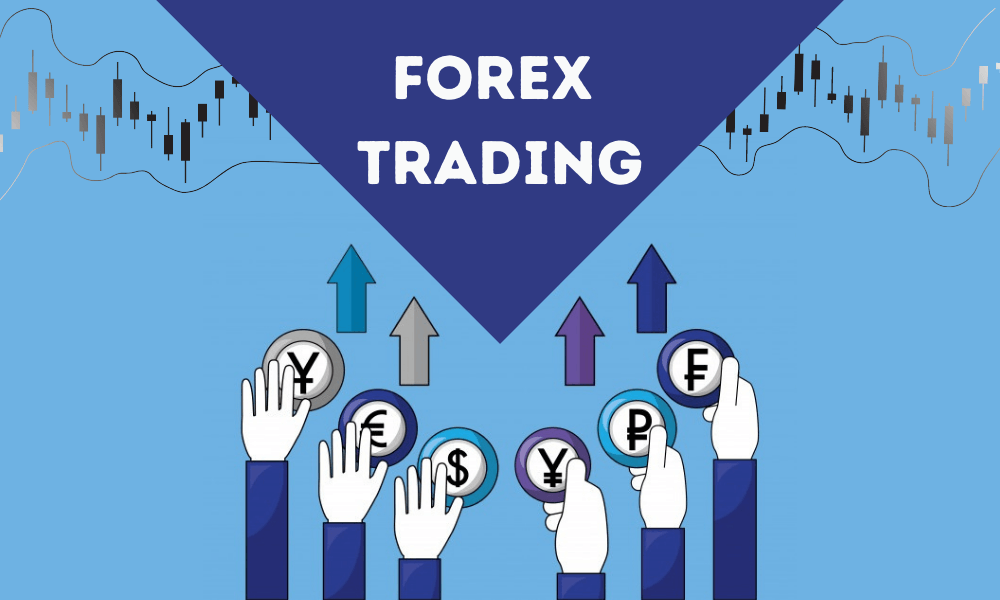
Foreign exchange market is the biggest and the most liquid financial market in the world. Its trading volume is 6.6 trillion per day.
But frankly speaking, failure and success are part of trading. You might lose some money or won't make the desired profit at the beginning of your trading career.
But once you start understanding the tricks & techniques, you won't have to look back.
"Forex" is the short form Foreign Exchange, and it refers to the buy & sell of one currency exchange for another.
It's the largest exchange market in the world. Individual people, companies, and countries are its participants. It's a comparatively easy market to invest in without much cash on hand.
For example, when you go on a trip and convert your euros to U.S. dollars, you're taking part in the global foreign trade market.
At any moment, the demand for a particular currency may move it either up or down in value compared to other currencies.
Here are a few basics regarding the currency market to guide you to take in starting forex trading.
Some ideal moves can help you conquer the Forex Market's complexness. The whole forex trading market's worth is around $2.4 quadrillion.
Trading in this vast market is moderately easy but making a consistent profit is difficult but not a hard nut to crack.
Let's point out some easy steps to make ideal moves:
1. Pay Attention To Daily Pivot Points
It's a guide tool for the commodities market to narrate potential turning points. Traders must be more conscious about daily pivot points for day traders, position traders, and swing traders.
2. Trade With An Edge
If a trader risks their money when he finds an opportunity in the market with an edge quickly can get successful. Several technical aspects might help to increase the chances of profitable trade.
3. Preserve Capital
Trades should focus on avoiding massive losses rather than making large profits at the very beginning. Most beginners lose their entire investment at the beginning of their trading career and are left with no money to trade again.
4. Simplify Technical Analysis
There are a limitless number of possible technical analysis lines available, but not all of them are necessary and even not better to use for a chart.
Unnecessary analysis charts will increase the complexity of the process, and it won't be profitable.
5. State Stop-Loss Orders At Feasible Price Levels
A Stop-loss order might sound pretty straightforward, but beginners need to follow to avoid massive losses. Depending on the analysis, it is also significant to place at a reasonable price level.
Despite being a global market, forex trading is simple and easy to understand. Let’s take a look at some of the basic aspects of currency trading.
Base And Quote Currency Pairs
Forex trading transactions are done in pairs. Traders have to exchange two different currencies, and the rate shows the value of one particular currency in terms of another.
Bid and ask prices & spread
The bid price means how much of the counter currency you can buy when you sell one unit of the base currency.
The ask price means how much of the counter currency (for example, EUR) it will take to buy one unit of the base currency (USD).
And the spread is the difference between these two prices (the ask price-the bid price=spread).
PIP
A pip is the forex version of a point: the minor price movement within a currency pair.
A pip's value depends on the trade lot and the currency pair. If you're trading a pair that has the USD as the counter currency and you're using a dollar-based account to buy and sell, the pip values are:
1. Micro lot (1,000 units): pip = 10 cents.
2. Mini lot (10,000 units): pip = $1.
3. Standard lot (100,000 units): pip = $10.
Understand the forex lot sizes
Forex is traded by the “lot.” A micro lot is 1,000 units of currency, a mini lot is 10,000 units, and a standard lot is 100,000 units.
The larger the lot size, the more risk you’re taking on; individual investors should rarely trade standard lots. If you’re a beginner, we recommend sticking to micro lots while you get your footing.
Leverage allows traders to borrow money from the broker to trade more than your account balance. Leverage trade could lead to a bigger profit or loss because of the full value trading.
Many brokers even offer leverage of up to 50:1 on major pairs, which means you can initiate trades up to 50 times larger than the balance in your account.
Margin
Margin is the total value of the trading position that traders are required to show to open the trade in the forex market. In the Forex market, Margin helps traders to create leverage trading. It depends on the broker's margin requirement.
Stop Loss & Take Profit
Stop Loss & Take Profit options are trading software implemented with the brokerage. These indicate traders when to close trades. Stop-Loss helps the trader indicate how much money he is willing to risk with his trade.
Take-Profit works in the opposite way of the Stop-Loss option. It shows the broker how much money a trader is willing to take as a profit. It will close the trade automatically at that point.
To conclude, forex trading is all about winning and losing. I wanted to help you understand a little bit better, and I hope I just did that! I will stop here even if there is a LOT more to discuss forex! A LOT! But this is not an ebook and is already a very long post! At least it gave you a few valuable tips, and I hope I did.
Good Luck!